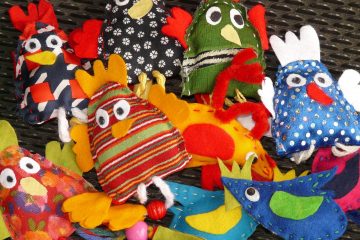Best of 2016, #3: 5 ways to use infographics in language class
We’re up to the third most popular post on Musicuentos for 2016. It’s a post on
Five ways to use infographics in language class

I’ve often said that infographics are a go-to authentic resource, particularly in novice classes. They are ready-made materials that help you provide input in the visual ways students are increasingly becoming used to. They often use bite-sized portions of language and lots of numbers that make them extra comprehensible. And because they are intended for native speakers’ consumption, they are empowering because they help students realize that learner materials aren’t the only conversation they can partake in.
But what do you do with them?
I got this question twice in the space of two days recently and that’s always a little red flag saying it would make a useful blog post. So, here are five ways I use infographics when I develop curriculum and lesson plans. I present them here with examples from the Spanish 1 program I’ve been developing with VIF International using a global inquiry model. I’ve included the essential question from the greater lesson (which is intended to take 4 to 5 days to complete) so you can see how they fit in the bigger picture.
1. Support for providing comprehensible input
The first way is to use it as ready-made visual support in the earliest stages of the lesson, the ones where you are providing comprehensible input on your way to asking students for active response.
| Lesson Title | 4.1 “Working to Live” |
| Proficiency Target | Novice Mid |
| Essential Question | How can someone improve their community doing what they love to do? |
| Infographic | Las profesiones |
| Use | The teacher uses the infographic to introduce vocabulary of professions by reviewing “do you like?” and “I like” and connecting activity words to a profession, while introducing the new phrase “It interests me.”
Example: Teacher: “Do you like (to read)?” Student: “Yes, I like it.” Teacher: “Does it interest you to be (a teacher)?” Student: “Yes, it interests me.” |
2. Venn diagram or other comparison
Because infographics are typically authentic (they are intended for consumption by native speakers), they often contain culture waiting to be used for compare and contrast activities. Cultural competencies, anyone?
| Lesson Title | 1.2 “Between you and me” |
| Proficiency Target | Novice Low |
| Essential Question | What do I need to know in order to express myself successfully in the context of Spanish class?
(Investigating power distance as a basis for choosing tú or usted, understanding commands and knowing how to introduce places and people in the school to a new Spanish-speaking student) |
| Infographic | Presupuesto para el retorno a clases |
| Use | Students can compare what they bought with what the student in this infographic bought to go back to school, and perhaps, if they are ready, how much was spent on these items. |
3. Specific questions in/with a graphic organizer
This is my favorite way to use an infographic. So we’ve gone through my teacher-directed, scaffolded input, but they’re not quite ready to tackle the performance assessment yet. They’re not ready to do the Can-Do. They need some more interaction with the targets in order to successfully create something with language. In the VIF curriculum we call this the investigar piece, and it frequently includes an infographic with a graphic organizer that scaffolds the language and helps students focus on the targets.
| Lesson Title | 7.2 “¡Me siento fatal!” |
| Proficiency Target | Novice Mid pushing to Novice High |
| Essential Question | How does culture affect where we go for help with illness and injury?
(Think investigation into topics from the curandera to the concept of a sliding scale.) |
| Infographic | ¿Gripe o resfriado? |
| Use | Students use this graphic organizer to answer specific questions about the content. |
4. Springboard for polling class opinions
Similar to a compare/contrast exercise, students can also use the infographic to get opinions from their classmates.
| Lesson Title | 3.1 “Los hobbies, los pasatiempos y la cultura” |
| Proficiency Target | Novice Low pushing to Novice Mid |
| Essential Question | How can we see culture in the activities a person prefers?
(Think investigation into what teenagers in Spain do for fun and how that compares to my own hobbies and whether I’d rather visit Santiago Bernebéu or Warner Brothers Madrid, for example.) |
| Infographic | Viva Miraflores |
| Use | First, students diagram their own opinions, then their classmates’ opinions on the hobbies they recognize in the infographic about activities in Miraflores in Lima, Perú. |
Here’s what that diagram can end up looking like in the lesson I’m referencing:
| Actividad | Me gusta | Me encanta | Detesto |
| leer | X | ||
| caminar | X |
5. Springboard for students to show what they’ve learned
Don’t forget to recycle previous structures and functions (it cements long-term memory!) to ask students to do something with the infographic that was an earlier target.
| Lesson Title | 5.6 “Geography and Natural Disasters” |
| Proficiency Target | Novice Mid |
| Essential Question | How can a person be prepared for a natural disaster common to their geographic area?
(Students investigate what disasters are common in various places, identify what is common in their area and what Spanish speakers in their area need to know in the event of that disaster, and develop skills to help communicate that necessary information to them.) |
| Infographic | La peor inundación |
| Use | First students answer:1. When did the flooding start?
2. What caused the flooding?3. What kind of body of water is most of the flooding coming from? 4. Which area has been affected more, Requena or Yarinacocha? How do you know? Then, students use the target “s/he needs” and feeling phrases to show what they’ve learned: 1. From what you can learn from this infographic, what is the biggest need for the people affected by these floods? 2. What are some Spanish words and phrases that people in this area might use to tell you how they feel? |
How have you used infographics to support your students’ proficiency development?
2 Comments
Comments are closed.




Where do you typically look online to find infographics?
I like infografiasencastellano.com but really, I mostly just use Google. If you go to images.google.com and type “infografía” plus your keyword(s) (e.g. comida, niños y tecnología) you’ll be amazed at what you find. Good question!